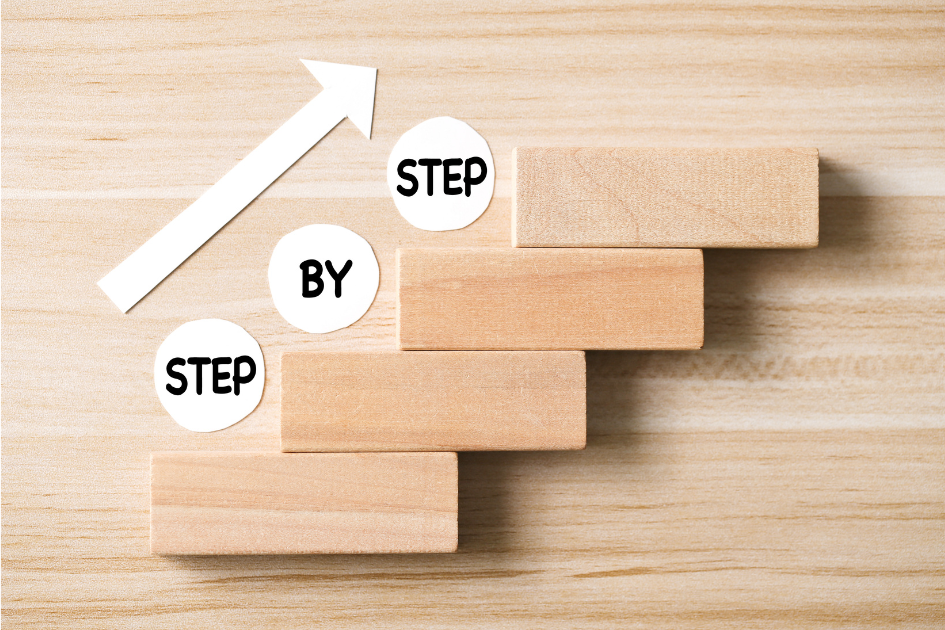Many will contend with overwhelming feelings of stagnation at some point in life. That lingering perception that we are somehow “stuck” seems to hold us captive in a cycle of monotony and discontent.
Whether it presents itself as a lack of direction, thoughts of unfulfilled potential, or an unshakeable feeling of being trapped in an unfulfilling routine, feeling stuck in life is a universal struggle many can relate to.
Maybe you’re at a crossroads, wondering which path to take. Perhaps you’ve been struggling with the same challenges and setbacks, wondering if you’ll ever find a way forward.
During these moments, you might begin questioning your purpose, choices, and ability to change your life positively.
However, it’s important to remember that stagnation doesn’t have to define you. It’s a temporary state that can be overcome with the right mindset and tools.
In this blog post, we’ll explore why we feel stuck, the common signs that indicate we’re in a rut, and, most importantly, practical strategies to rediscover our path forward.
Recognize When You’re Feeling Stuck in Life?

Feeling stuck is an emotional and mental stagnation or considering yourself confined in a particular situation or circumstance.
It is characterized by a lack of progress, fulfillment, or direction, which can leave you feeling dissatisfied, unfulfilled, and uncertain about your future.
This feeling can appear in different aspects of life, such as career, relationships, personal growth, or overall life purpose.
It often involves a sense of being unable to move forward, make significant changes, or gain control of repetitive patterns that hinder personal development and happiness.
It’s important to note that this feeling is subjective and can differ from person to person. What may make one person feel stuck might have a different effect on another.
The intensity and duration can also vary, ranging from temporary moments of uncertainty to prolonged dissatisfaction and inactivity.
Recognizing and acknowledging this feeling is the first step towards addressing it.
Understanding the underlying causes and seeking solutions can free you from stagnancy, encourage you to explore new possibilities, and regain your direction and contentment.
Common Causes of Feeling Stuck

Individuals may perceive themselves to be stuck for several reasons. Factors may be attributed to both internal and external influences.
Here are five common causes that can contribute to feeling stuck that you should be on the lookout for as you self-reflect on your own life:
Fear of Change & Failure
One of the primary reasons you may feel stuck is the fear of change and the potential for failure.
Stepping out of your comfort zone and venturing into the unknown can be intimidating, as it involves uncertainty and risk.
This fear can keep you rooted in familiar but unsatisfying situations, preventing you from exploring new opportunities and growth.
Lack of Clarity & Direction
Feeling stuck often stems from needing more clarity and direction in life.
With clearly defined goals, passions, and purpose, making decisions and taking action toward meaningful progress becomes more accessible.
Without a clear sense of direction, you can find yourself drifting aimlessly, unable to identify the steps needed to move forward.
Self-Limiting Beliefs & Negative Self-Talk
Your internal dialogue and belief systems are crucial in how you perceive yourself and your capabilities.
Self-limiting beliefs, such as “I’m not good enough,” “I don’t deserve success,” or “I will always fail,” can hold you back and reinforce feelings of being stuck.
Negative self-talk perpetuates a cycle of self-doubt and undermines your confidence, making it difficult to take risks, pursue opportunities, or embrace change.
Past Experiences or Trauma
Past experiences or unresolved trauma can significantly impact your present state and contribute to feeling stuck.
Painful or traumatic events from the past can create emotional wounds and limiting beliefs that affect your self-perception and decision-making.
Unresolved issues can linger, causing you to doubt yourself, fear similar experiences, or become confined to patterns that prevent personal growth and progression.
External Expectations & Societal Pressures
External expectations and societal pressures can significantly contribute to feeling stuck.
Society often imposes predefined paths and benchmarks of success, causing you to compare yourself to others and measure your worth based on external standards.
Trying to live up to these expectations, whether in terms of career, relationships, or lifestyle, can create a sense of being limited to fulfilling societal norms rather than pursuing your authentic aspirations.
To address these causes, you must develop self-awareness and a commitment to personal growth.
It may require seeking support from therapists, counselors, or coaches to heal past wounds, challenge self-limiting beliefs, and develop healthier thought patterns.
By working through past experiences, reframing your beliefs, and fostering self-compassion, you can gradually release the grip of the past and embrace a more fulfilling and expansive future.
Signs of Feeling Stuck

The feeling of stagnation or dissatisfaction can affect your emotions, thoughts, and overall mental health and well-being.
Recognizing the signs is crucial to identifying areas that require attention and transformation.
Here are some common signs that indicate you may feel stuck and in need of a change:
Lack of Motivation
A common sign of feeling stuck is a noticeable decline in motivation.
You may find it difficult to summon the drive and energy necessary to pursue goals or engage in activities that once excited you.
Everyday tasks may feel burdensome, and you may struggle to find purpose or passion in what you do.
Monotony & Routine Fatigue
If you feel restricted to a monotonous routine, doing the same things day in and day out without any variation may indicate a sense of being stuck.
The absence of new experiences, challenges, or growth opportunities can lead to boredom and stagnation.
Persistent Dissatisfaction
Feeling consistently dissatisfied despite external accomplishments or material possessions indicates something deeper may be happening.
You may have achieved specific goals or reached a level of success, yet there is a lingering sense of emptiness or lack of fulfillment.
Indecisiveness & Lack of Clarity
When feeling stuck, decision-making can become challenging. You may need clarification about which path to take or what choices align with your values and desires.
This indecisiveness stems from a need for clarity about your goals and the direction you want to move in.
Longing for Change
Feeling a strong desire for change but not knowing how or where to initiate it is a common sign of being stuck.
You may long for a different lifestyle, career, or relationship dynamic, but anxiety, uncertainty, or external influences keep you from taking action.
Feeling Trapped or Powerless
You feel trapped in your current circumstances, whether a job, relationship, or living situation, which can evoke feelings of powerlessness.
You may believe you have limited options or need more resources to make significant changes, leaving you unable to imagine a way forward.
Comparison & Envy
Excessive comparison to others and feelings of envy can indicate dissatisfaction with your own life.
Constantly comparing your progress, achievements, or possessions to others can contribute to feelings of inadequacy and being stuck in a cycle of self-criticism.
Loss of Passion
If activities or pursuits that used to ignite your passion and bring you joy now feel dull or uninteresting, it may be a sign of feeling stuck.
Your interests and passions may have evolved, and a lack of alignment between your current circumstances and true desires can dampen your enthusiasm.
Recognizing these signs can serve as a starting point for self-reflection and taking steps to release the burden of stagnation.
Remember, there is always time to rediscover your purpose, make changes, and forge a new path that brings you contentment and happiness.
6 Tips to Combat Feeling Stuck in Life

When you feel stuck and stagnated in your life, it can be a challenging and frustrating experience that, if not addressed, can take a toll on your mental and physical health and overall well-being.
The great news, however, is that it doesn’t have to define your future.
By taking proactive steps toward self-improvement and embracing a mindset of growth and exploration, you can release yourself from the shackles of stagnation and rediscover a sense of purpose and fulfillment.
Below are practical steps to help you combat feeling stuck and embrace a transformative journey of personal growth.
Reflect & Identify the Root Causes
Reflect on the underlying reasons that contribute to you feeling stuck. Is it apprehension, self-doubt, or external pressures?
Are there unresolved past experiences or limiting beliefs holding you back?
You’ll need clarity on these root causes to understand the specific areas that require attention and change.
Set Clear & Meaningful Goals
Establish clear and meaningful goals that align with your values and aspirations. Having a sense of direction provides purpose and motivation to move forward.
Break down your goals into actionable steps, making them more attainable and less overwhelming.
Celebrate small wins along the way, as each step brings you closer to overcoming stagnation.
Challenge Limiting Beliefs & Cultivate a Growth Mindset
Identify and challenge self-limiting beliefs that hinder your progress. Replace negative thoughts with positive affirmations and embrace a growth mindset.
Understand that failures and setbacks are opportunities for learning and growth, and view challenges as stepping stones toward your desired outcomes.
Embrace curiosity and continuous improvement, and believe in your ability to adapt and thrive.
Seek Support & Guidance
Don’t hesitate to lean on your support system of trusted friends, family, or professionals.
Share your feelings and aspirations with them, and ask for their guidance and perspective.
Consider working with a therapist, coach, or mentor who can provide valuable insights, strategies, and accountability as you navigate your journey.
Embrace Change & Take Action
Step out of your comfort zone and embrace change. Identify areas where you can introduce new experiences, habits, or perspectives.
Take calculated risks and seize opportunities that align with your goals and values.
Remember, progress often requires stepping into the unknown and embracing discomfort.
Prioritize Self-Care & Well-being
Prioritize self-care and well-being as you navigate through this transformative process.
Nurture your physical, mental, and emotional health by engaging in activities that bring you joy, practicing mindfulness or meditation, maintaining a balanced lifestyle, and surrounding yourself with positive influences.
Taking care of yourself creates a solid foundation for personal growth and resilience.
Final Thoughts

Although stagnancy can initially be an overwhelming and disheartening experience, it’s important not to view it as a permanent state; you do not have to remain stuck.
It is merely a chapter in your story that provides the potential for growth, self-discovery, and transformation.
By recognizing the signs and causes and addressing them head-on, you can begin taking proactive steps to overcome them, releasing yourself from the chains of stagnation and uncovering your unique path.
The process will require patience, perseverance, and self-compassion. There will be ups and downs, moments of uncertainty, and setbacks.
But with determination and a positive mindset, you can navigate through the challenges and emerge stronger on the other side.
Embrace the opportunity for self-reflection, explore new possibilities, and dare to dream beyond your current circumstances.
Trust in your ability to create positive change, and believe that you have the power to shape your destiny.





